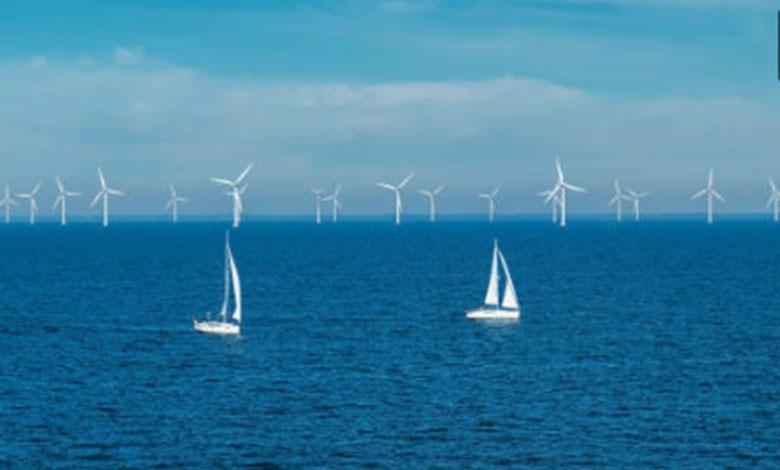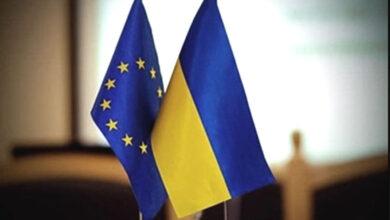Green future of the Baltics: renewable energy as a choice of independence

The historical experience of the Baltic states, which always resolutely resisted Soviet occupation, finds its continuation in modern times. Lithuania, Latvia and Estonia, which share a 1,015-mile border with Russia and Belarus, have become among the most active EU members in resisting threats from the Kremlin. Their desire to get rid of any form of dependence on the imperialist aggressor state is a pattern that only intensified after the full-scale invasion of Ukraine by Russia.
Abandonment of Russian fossil fuels and final disconnection from the Russian power grid became strategically important steps to ensure national security, sovereignty and independence of the Baltic states. Currently, the Baltics are completing the disconnection from the Russian energy system and switching to the European one. This step was the result of a five-year EU project worth 1.6 billion euros.
It is assumed that energy independence will deprive Moscow of influence in the region, although, of course, threats remain. Russia is accused of sabotaging infrastructure, and the Baltic states are preparing for possible crises. In recent years, the Baltics have installed the necessary infrastructure to stabilize their energy grid, setting an example for their neighbors in the Eurozone.
The transition to renewable energy may cause some disruptions, but the Baltic states are confident that it is the right strategic decision to strengthen their energy security.
From BRELL to ENTSO-E
Historically, Latvia, Lithuania and Estonia were part of the Soviet BRELL power system, which connected their power grids to Russia and Belarus. This created dependence on centralized management of electricity supply, which could be used as a tool of political influence. Dependence on this system limited the possibilities of the Baltic countries in ensuring energy autonomy and modernization of networks.
After independence, the Baltic states began to integrate with the European energy system, seeking to join ENTSO-E, the European electricity transmission network that allows countries to coordinate, share resources and avoid dependence on the post-Soviet system.
The transition to European standards involves the synchronization of power grids with the EU, the development of local sources of renewable energy, and the introduction of modern technologies and safety measures.
Complete disconnection from the Russian power grid became possible thanks to the large-scale modernization of the Baltic energy infrastructure and the transition to the European system. The main transformation is the installation of new high-voltage power lines connecting the Baltic States with Poland and Sweden, and allowing to quickly transfer energy to where it is needed.
For stable operation of the network, special devices – synchronous capacitors – are installed. They ensure that electricity is supplied evenly, even when there are fluctuations in consumption or production, for example due to changes in weather affecting wind and solar farms.
In addition, the Baltic countries have started using modern batteries to store excess energy. This means that when the sun is shining or the wind is blowing harder than needed, excess energy can be stored and used later, such as at night or during peak hours.
To manage all this, a modern power grid management system was created. In real time, it monitors the state of the system, prevents accidents and optimizes the supply of electricity.
The Baltics are also actively developing renewable energy – wind farms, solar panels and bioelectric plants, which not only reduce dependence on fossil fuels, but also meet European environmental standards.
Cyber protection should be mentioned separately. In today’s world, it is important not only to supply electricity, but also to protect the system from hackers. The Baltic countries took care of this by introducing the most modern technologies. Special programs are installed in the networks that block suspicious activities, encrypt data and protect power grid management. Engineers and power company employees are trained to know how to respond to hacking attempts. In addition, states exchange information among themselves in order to quickly identify new threats.
Also, special attention is paid to the physical protection of power plants, substations and power lines. These objects are guarded, they are equipped with video surveillance and sensors that warn of any attempts to break in. Lines and equipment are very powerful and withstand even strong storms or vandalism.
To avoid interruptions, backup energy sources and backup electricity transmission routes are created. For example, if there is a problem somewhere, smart systems can quickly reroute power from other locations.
In addition, the countries of the Eurozone cooperate with each other – they conduct joint exercises, share experience and develop action plans in case of attacks or accidents.
How will the changes affect the Baltic economy and what is public opinion about the transition
The main thing that gives independence from the Russian grid is stability and independence from external electricity supplies, which could be used as a tool of political pressure. Integration into the European energy market will allow buying electricity at favorable prices and will reduce the risk of sudden failures.
Another advantage is the development of own green energy. This not only reduces dependence on imports and meets European environmental standards, but also creates new jobs. As of 2022, the share of renewable energy sources (RES) in gross final energy consumption was 43.3% in Latvia and 38.5% in Estonia. In Lithuania, this share is also significant.
In order to achieve ambitious goals, the Baltic Sea countries have agreed to increase wind power capacity in the Baltic Sea from 2.8 GW to 19.6 GW by 2030. Estonia has particularly ambitious plans, which aims to completely switch to renewable energy sources during this time, providing 100% of its needs through RES.
However, the initial transition period can be difficult. Building new infrastructure required significant investment, and some of that cost can be reflected in energy bills. In addition, dependence on renewable sources can cause small fluctuations in prices depending on the weather. But in order to avoid interruptions, modern energy storage systems have been implemented in the Baltic States.
For industrial enterprises, the transition may mean an increase in costs, because previously they used cheaper Russian electricity. However, the long-term benefits of a stable and secure energy supply from Europe compensate for these temporary difficulties.
Most residents of the Baltic countries support the course towards energy independence, understanding that this is an important step towards security, stability and an ecological future. For many, these changes symbolize the final break with the Soviet past and the strengthening of national sovereignty. People are happy that their countries are investing in renewable energy, which not only reduces dependence on imports, but also helps preserve nature.
However, there are some concerns. Some are worried about the rising cost of electricity, because updating networks and building new stations is expensive. In some regions, people are unhappy that wind turbines can spoil the landscape or create noise. Others fear that reliance on solar and wind could lead to power outages, especially in winter.
To remove these questions and achieve public consensus, government officials explain to citizens why these changes are important and involve them in the discussion. Residents can express their opinions on new projects, and support programs are being developed for those experiencing financial difficulties.
How the Baltic experience can serve as an example for those who seek to get rid of dependence on Russia
The experience of the Baltic states shows that even small states can successfully reduce their dependence on Russian energy resources if they have a clear plan and political determination. Their path to energy independence can serve as a useful example for other countries.
The Baltics gave up energy dependence on Russia, making a bold choice in favor of energy independence. The liquefied natural gas terminal in Klaipeda opened the way for supplies from Norway and the USA, and the construction of its own renewable power plants strengthened this progress. Integration into the European energy system destroyed the remnants of dependence on Soviet networks, and “smart” power networks became a symbol of technological progress. This achievement is a triumph of Baltic political will and EU support, worthy of emulation by those who have not yet done so.
Tetyana Viktorova





